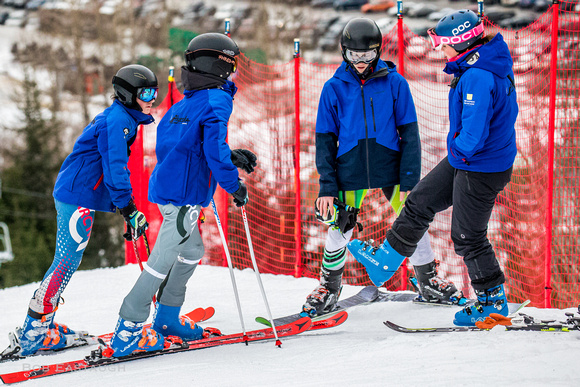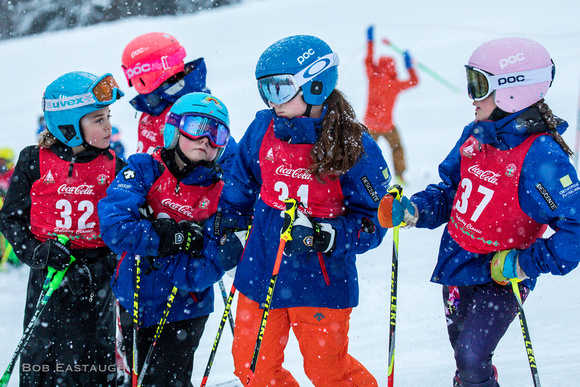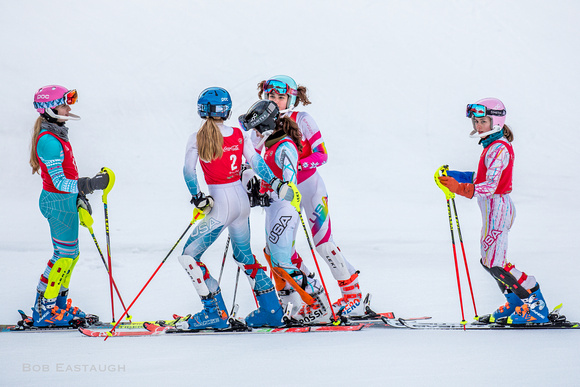Ski Racing, Again, Part 2; January 2018
The last post depicted four young (U12 and U14) racers. They were the best or among the very best in their three age-group races the weekend of January 12-15. Their skiing illustrates some traits of good, young racers: determination, athleticism, focus, and skill. The origins of these traits can vary wildly, from nature to nurture. Except for the rarest racers, these traits are usually and mainly the result of experience and training, and not just on the ski hill.
As you would expect, the achievements of these four racers will encourage them to keep racing, until they ultimately perceive the rewards as insufficient to balance the sport's costs, meaning not merely financial costs but social and even medical burdens. Even the most successful World Cup and Olympic skiers (Stenmark, Sailer, Maier, Killy, Moser-Proell) eventually stop competing. Lindsey Vonn will eventually retire; for her, the only question is whether she can equal or exceed Stenmark's record of World Cup victories and maybe whether she can win another Olympic medal. Even Mikaela Shiffren, who is only 22 but potentially the greatest ever, will eventually retire.
These four young skiers are, relatively speaking, the exceptions: they are currently fairly dominant. But things can change quickly for young racers as late bloomers suddenly take off and early victors lose their margins. The margins in ski racing are narrow. It takes relatively little time to move from fifth to first and vice versa as a season progresses. Yet some in these fields of 80 or so racers may never become dominant, no matter how long they train and compete.
Nonetheless, many will continue to race for years and those who stop may eventually return as Masters. Given the odds, then, against consistent success even on a local level, why would so many young racers continue to train and race, often in appalling conditions in a discipline that is extremely hard to master? Probably because for most, victories don't define success. For most, training and racing are ends in themselves; for them timing is mainly a way to measure relative improvement, not one's margin of victory. And one's perception of improvement is one of the rewards of ski racing. (This notion has relevance to how a coach coaches: negative coaching diminishes this particular reward.)
 EF4A2433
EF4A2433
Coaches impart technique and life lessons.
 EF4A7820
EF4A7820
Pre-race inspection and mooning around
 EF4A0833
EF4A0833
Post-run discussions in the finish line
Comments


After a lifetime of mainly expressing myself with words, my postings here will mainly rely on images. They will speak for themselves to some extent, but I'll usually add a few comments of explanation. I've taken photographs for decades, since the 1950's, inspired in part by my father's photographic skill. Four years of photo assignments and quality darkroom time eventually gave way to decades of casual and family picture-taking. I re-immersed myself when I left film and turned to digital.